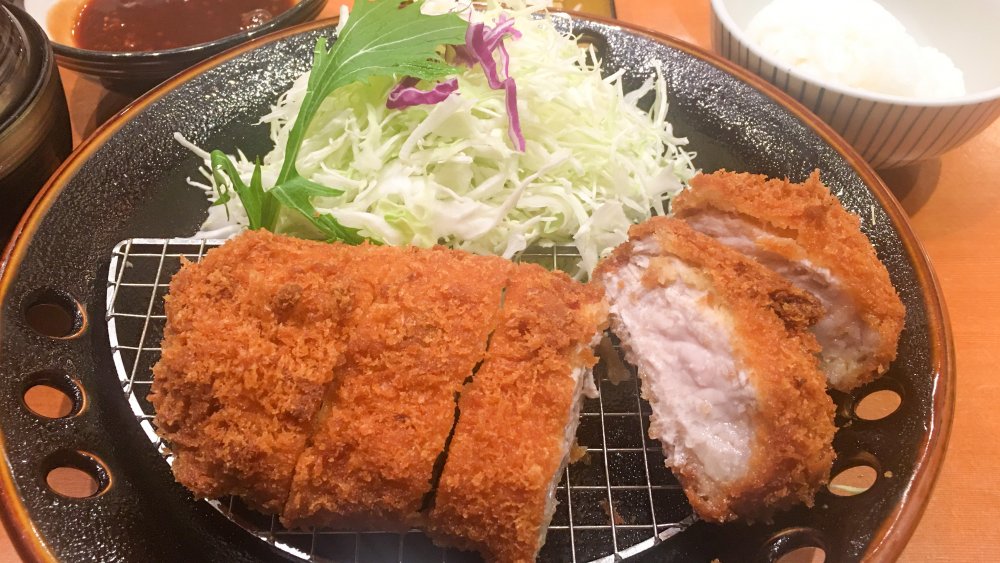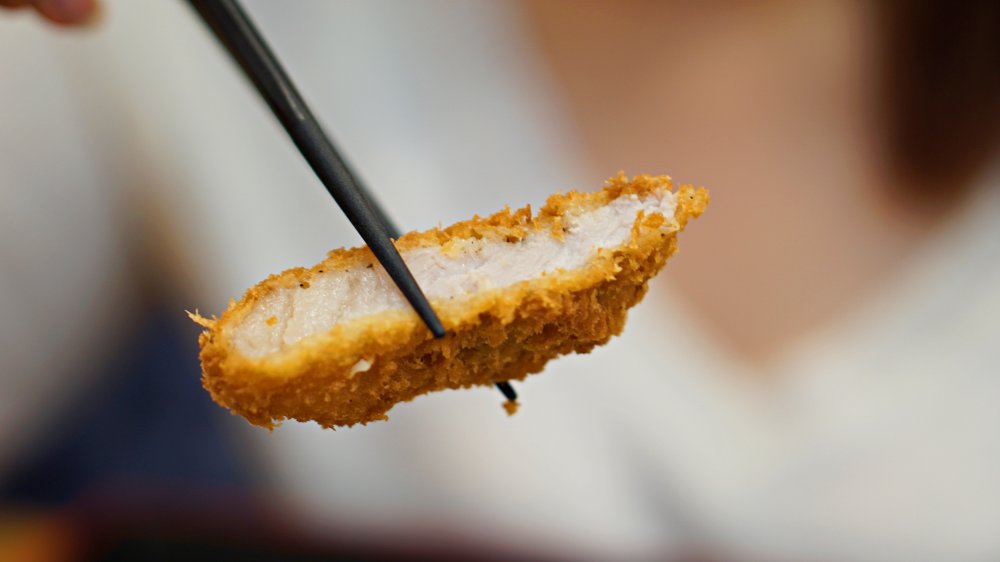The Truth About Japanese Katsu
Japanese katsu, a fried meat cutlet, is the epitome of Japanese comfort food. Beloved by children and adults alike, the dish is popular across all walks of life in Japan. The term "katsu" encompasses a wide variety of cutlets including chicken, pork, and beef. These three varieties each have their own names in Japanese and often have specialty restaurants dedicated to each variety (via Favy JP).
However, pork katsu, known in Japanese as tonkatsu, is the most popular option and can be found on virtually every street corner of Tokyo in one form or another (via Gurunavi). This makes sense as more pork is eaten in Japan every year than beef and chicken combined (via The Japan Times). The island of Okinawa is prized for its pork, as is kurobuta (black pig), which can be found in the southern prefecture of Kagoshima. Expect to pay a pretty penny to have tonkatsu made from kurobuta, as it's truly premium meat.
The history of tonkatsu
Katsu cutlets are typically smothered in Japanese bread crumbs known as panko and fried (via Damn Delicious). They can be eaten on their own, often with rice, shredded cabbage, and a Japanese version of Worcestershire sauce, or alongside Japanese curry, or in a white bread sandwich.
Tonkatsu was invented in Japan in the late 1800s (via UPB Products). The name was adapted from the transliteration of the English word "cutlet" to the Japanese "katsuretsu." Initially, the dish was considered to be a Japanese version of European cuisine (it resembles and tastes a bit like schnitzel), but perhaps owing to the fact that it's often served with miso soup and rice, it has become embraced as a national dish. Japanese people sometimes eat katsu before a big exam or sporting match as a superstitious meal. In Japanese, the verb for "to win" or "to be victorious" sounds exactly the same as "katsu" (via Go Go Nihon).

